#rockledge florida
Text
Went to Rockledge Gardens today with a friend. She's a vendor there, and sells some of her beautiful creations there. While she was refreshing her stock, and display, I was wandering the property. My Mom used to love to come here when I was a young'un, around 13 or so. I'm 60 now. If you're a plant person, this is your place.
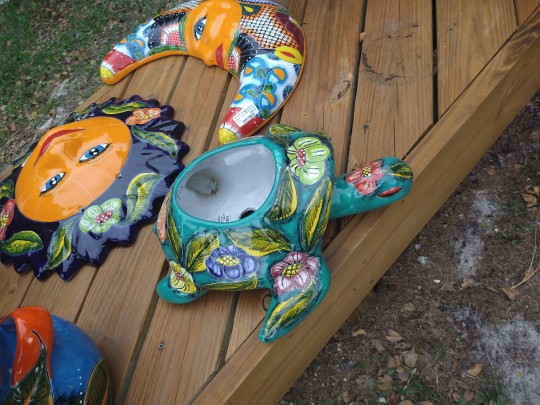

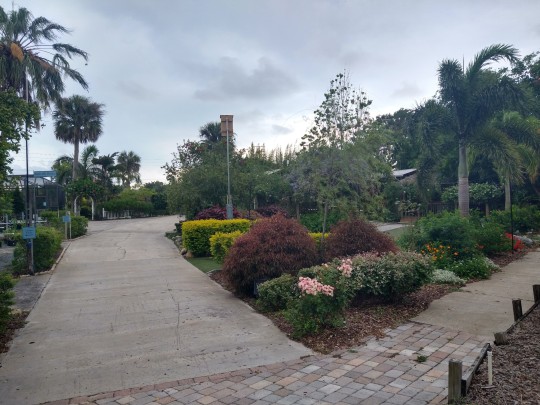





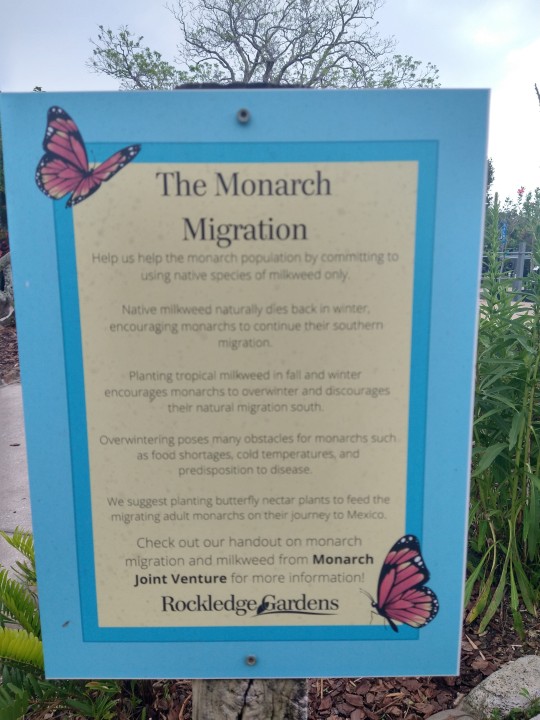
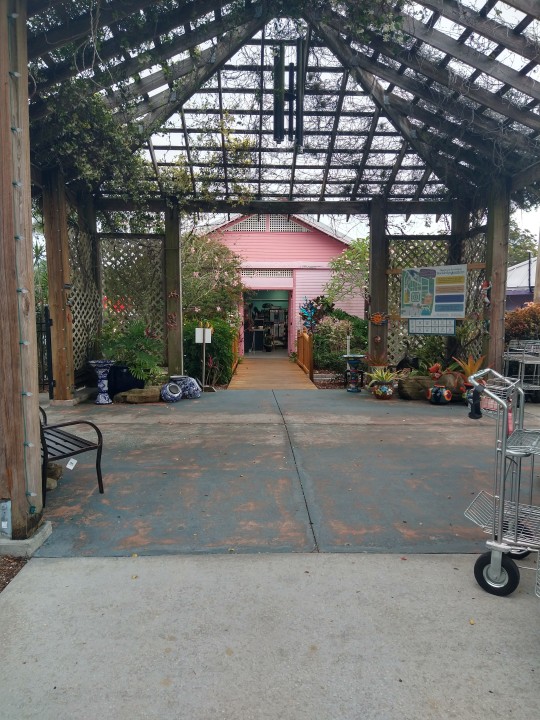
#rockledge gardens#rockledge florida#nursery#nurseries#flowers#plants#titusville#spacecoast#florida#brevardcounty#centralflorida
2 notes
·
View notes
Text
When private equity destroys your hospital
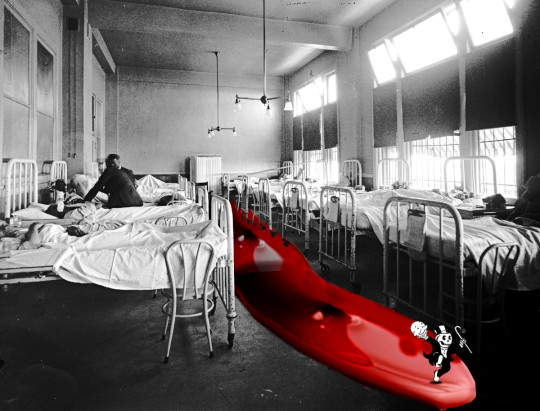
I'm on tour with my new novel The Bezzle! Catch me TOMORROW in PHOENIX (Changing Hands, Feb 29) then Tucson (Mar 9-10), San Francisco (Mar 13), and more!

As someone who writes a lot of fiction about corporate crime, I naturally end up spending a lot of time being angry about corporate crime. It's pretty goddamned enraging. But the fiction writer in me is especially upset at how cartoonishly evil the perps are – routinely doing things that I couldn't ever get away with putting in a novel.
Beyond a doubt, the most cartoonishly evil characters are the private equity looters. And the most cartoonishly evil private equity looters are the ones who get involved in health care.
(Buckle up.)
Writing for The American Prospect, Maureen Tcacik details a national scandal: the collapse of PE-backed hospital chain Steward Health, a company that bought and looted hospitals up and down the country, starving them of everything from heart valves to prescription paper, ripping off suppliers, doctors and nurses, and callously exposing patients to deadly risk:
https://prospect.org/health/2024-02-27-scenes-from-bat-cave-steward-health-florida/
Steward occupies a very special place in the private equity looting cycle. Private equity companies arrange themselves on a continuum of indiscriminate depravity. At the start of the continuum are PE funds that buy productive and useful firms (everything from hospitals to car-washes) using "leveraged buyouts." That means that they borrow money to buy the company and use the company itself as collateral: it's like you getting a bank-loan to buy your neighbor's mortgage out from under them, and using your neighbor's house as collateral for that loan.
Once the buyout is done, the PE fund pays itself a "special dividend" (stealing money the business needs to survive) and then starts charging the business a "management fee" for the PE fund's expertise. To pay for all this, the PE bosses start to hack away at the company. Quality declines. So do wages. Prices go up. The company changes suppliers, opting for cheaper alternatives, often stiffing the old company. There are mass layoffs. The remaining employees end up doing three peoples' jobs, for lower wages, with fewer materials of lower quality.
Eventually, that top-feeding PE company finds a more desperate, more ham-fisted PE company to unload the business onto. That middle-feeding company also does a leveraged buyout, pays itself another special dividend, cuts wages, staffing and quality even further. They switch to even worse suppliers and stiff the last batch. Prices go up even higher.
Then – you guessed it – the middle-feeding PE company finds an even more awful PE bottom-feeder to unload the company onto. That bottom feeder does it all again, without even pretending to leave the business in condition to do its job. The company is a shambling zombie at this point, often producing literal garbage in place of the products that made its reputation. Employees' paychecks bounce, or don't show up at all. The company stops bothering to pay the lawyers that have been fending off its creditors. Those lawyers sue the company, too.
That's the kind of PE company Steward Health was, and, as the name suggests, Steward Health is in the business of stripping away the very last residue of value from community hospitals. As you might imagine, this gets pretty fucking ugly.
Steward owns 32 hospitals up and down the country, though its holdings are dwindling as the company walks away from its debt-burdened holdings, after years of neglect that have rendered them unfit for use as health facilities – or for any other purpose. Tcacik's piece offers a snapshot of one such hospital: Florida's Rockledge Regional Medical Center, just eight miles from Cape Canaveral.
Rockledge is a disaster. The fifth floor was, at one point, home to 5,000 bats.
Five.
Thousand.
Bats.
(Rockledge stiffed the exterminators.)
The bats were just the beginning. One of the internal sewage pipes ruptured. Whole sections of the hospital were literally full of shit, oozing out of the walls and ceiling, slopping over medical equipment.
That's an urgent situation for any hospital, but for Rockledge, it's catastrophic, because Rockledge is a hospital without any hospital supplies. Steward has stiffed the companies that supply "heart valves, urology lasers, Impella catheters, cardiac catheterization balloons, slings for lifting heavier patients, blood and urine test reagents, and most recently, prescription paper." Key medical equipment has been repossessed. So have the Pepsi machines. The hospital cafeteria had its supply of cold cuts repossessed:
https://www.reddit.com/r/massachusetts/comments/1agc1j4/comment/kolicqo/
It's not just Steward's nonpayments that reek of impending doom. Its payments also bear the hallmarks of a scam artist on the brink of blowing off the con. The company recently paid off a vendor with five separate checks for $1m, each drawn on "a random hospital in Utah" (Steward recently walked away from its Utah hospitals; its partners there are suing it for stealing $18m on their way out the door).
This company – which owns 32 hospitals! – has resorted to gambits like sending photos of fake checks to doctors it hasn't paid in months as "proof" that the money was coming (the checks arrived 22 days later).
Steward owes so much money to its employees – $1.66m to just one doctors' group. But the medical staff keep doing their jobs, and are reluctant to speak on the record, thanks to Steward's reputation for vicious retaliation. Those health workers keep showing up to take care of patients, even as the hospital crumbles around them. One clinician told Tcacik: "I watched a bed collapse underneath a [patient] who had just undergone hip surgery."
Rockledge has nine elevators, but only five of them work – the other four have been broken for a year. The hospital's fourth floor has been converted to "a graveyard of broken beds." The sinks are clogged, or filled with foul gunk. There's black mold. Nurses have noted on the maintenance tags that the repair service refuses to attend the hospital until their overdue bills are paid. The fifteen-person on-site maintenance team was cut to just two workers.
Steward is just the latest looting owner of Rockledge. After the Great Financial Crisis, private equity consultants helped sell it to Health Management Associates. The hospital's CEO took home a $10m bonus for that sale and exited; Health Management Associates then quickly became embroiled in a Medicare fraud and kickback scandal. Soon after, Rockledge was passed on to Community Health Systems, who then sold it on to Rockledge.
Steward, meanwhile, was at that time owned by an even bigger private equity giant, Cerberus, which then sold Steward off. That deal was performatively complex and hid all kinds of mischief. Prior to Cerberus's sell-off of Steward, they sold off Steward's real-estate. The buyer was Medical Properties Trust, who gave Cerberus $1.25b for the real-estate: three hospitals in Florida and three more in Ohio. Steward then contracted to operate these hospitals on MPT's behalf, and pay MPT rent for the real-estate.
This complex arrangement was key to siphoning value out of the hospital and to keeping angry creditors at bay – if you can't figure out who owes you money, it's a lot harder to collect on the debt. The scheme was masterminded by Steward founder/CEO Ralph de la Torre. De la Torre is notorious for taking a massive dividend out of the company while it owed $1.4b to its creditors. He bought a $40m yacht with the money.
De la Torre was once feted as a business genius who would "disrupt" healthcare. But as Steward's private jet hops around "Corfu, Santorini, St. Maarten and Antigua"
as its hospitals literally crumble, he's becoming less popular. In Massachusetts, politicians have railed against Steward and de la Torre (Governor Healey wants the company to leave the state "as soon as possible").
Florida, by contrast, is much more friendly to Steward. The state Health and Human Services Committee chair Randy Fine is an ardent admirer of hospital privatization and is currently campaigning to sell off the last community hospital in Brevard County. The state inspectors are likewise remarkably tolerant of Steward's little peccadillos. The quasi-governmental agency that inspects hospitals has awarded this shit-and-bat-filled, elevator-free, understaffed rotting hulk "A" grades for quality.
These inspectors jointly represent a mismatched assortment of private and public agencies, dominated by a nonprofit called Leapfrog, the brainchild of Harvard public-health prof Lucian Leape, who founded it in 2000. Leapfrog likes to tout its "transparent" assessment criteria, and Steward are experts at hitting those criteria, spending the exact minimum to tick every box that Leapfrog inspectors use as proxies for overall quality and safety.
This is a pretty great example of Goodhart's Law: "every measurement eventually becomes a target, whereupon it ceases to be a good measurement":
https://xkcd.com/2899/
But despite Steward's increasingly furious creditors and its decaying facilities, the company remains bullish on its ability to continue operations. Medical Properties Trust – the real estate investment trust that is nominally a separate company from Steward – recently hosted a conference call to reassure Wall Street investors that it would be a going concern. When a Bank of America analyst asked MPT's CFO how this could possibly be, given the facility's dire condition and Steward's degraded state, the CFO blithely assured him that the company would get bailouts: "We own hospitals no one wants to see closed."
That's the thing about PE and health-care. The looters who buy out every health-care facility in a region understand that this makes them too big to fail: no matter how dangerous the companies they drain become, local governments will continue to prop them up. Look at dialysis, a market that's been cornered by private equity rollups. Today, if you need this lifesaving therapy, there's a good chance that every accessible facility is owned by a private equity fund that has fired all its qualified staff and ceased sterilizing its needles. Otherwise healthy people who visit these clinics sometimes die due to operator error. But they chug along, because no dialysis clinics is worse that "dialysis clinics where unqualified sadists sometimes kill you with dirty needles":
https://www.thebignewsletter.com/p/the-dirty-business-of-clean-blood
The bad news is that private equity has thoroughly colonized the entire medical system. They took hospitals, fired the doctors, then took over the doctors' groups that provided outsource staff to the hospital:
https://pluralistic.net/2020/04/04/a-mind-forever-voyaging/#prop-bets
It's illegal for private equity companies to own doctors' practices (doctors have to own these), but they obfuscated the crime with a paper-thin pretext that they got away with despite its obvious bullshittery:
https://pluralistic.net/2020/05/21/profitable-butchers/#looted
The financier who decides whether you live or die depends on an algorithm that literally sets a tolerable level of preventable deaths for the patients trapped in the practice:
https://pluralistic.net/2023/08/05/any-metric-becomes-a-target/#hca
Private equity also took over emergency rooms and boobytrapped them with "surprise billing" – junk fees that ran to thousands of dollars that you had to pay even if the hospital was in network with your insurer. They made billions from this, and spent a many millions from that booty keeping the scam alive with scare ads:
https://pluralistic.net/2020/04/21/all-in-it-together/#doctor-patient-unity
The whole health stack is colonized by private equity-backed monopolies. Even your hospital bed!
https://pluralistic.net/2022/01/05/hillrom/#baxter-international
Then there's residential care. Private equity cornered many regional markets on nursing homes and turned them into slaughterhouses, places where you go to die, not live:
https://pluralistic.net/2021/02/23/acceptable-losses/#disposable-olds
The palliative care sector is also captured by private equity. PE bosses hire vast teams of fast-talking salespeople who con vulnerable older people into entering an end-of-life system before they are ready to die. Thanks to loose regulation, the nation is filled with fake hospices that can rake in millions from Medicare while denying all care to their patients (hospice patients don't get life-extending medication or procedures, by definition):
https://pluralistic.net/2023/04/26/death-panels/#what-the-heck-is-going-on-with-CMS
If you survive this long enough, Medicare eventually tells the hospice that you're clearly not dying and you get kicked off their rolls. Now you have to go through the lengthy bureaucratic nightmare of convincing the system – which was previously informed that you were at death's door – that you are actually viable and need to start getting care again (good luck with that).
If that kills you, guess what? Private equity has rolled up funeral homes up and down the country, and they will scam your survivors just as hard as the medical system that killed you did:
https://pluralistic.net/2022/09/09/high-cost-of-dying/#memento-mori
The PE sector spent more than a trillion dollars over the past decade buying up healthcare companies, and it has trillions more in "dry powder" allocated for further medical acquisitions. Why not? As the CFO of Medical Properties Trust told that Bank of America analyst last week, when you "own hospitals no one wants to see closed." you literally can't fail, no matter how many people you murder.
The PE sector is a reminder that the crimes people commit for money far outstrip the crimes they commit for ideology. Even the most ideological killers are horrified by the murders their profit-motivated colleagues commit.
Last year, Tkacic wrote about the history of IG Farben, the German company that built Monowitz, a private slave-labor camp up the road from Auschwitz to make the materiel it was gouging Hitler's Wehrmacht on:
https://pluralistic.net/2023/06/02/plunderers/#farben
Farben bought the cheapest possible slaves from Auschwitz, preferentially sourcing women and children. These slaves were worked to death at a rate that put Auschwitz's wholesale murder in the shade. Farben's slaves died an average of just three months after starting work at Monowitz. The situation was so abominable, so unconscionable, that the SS officers who provided outsource guard-labor to Monowitz actually wrote to Berlin to complain about the cruelty.
The Nuremberg trials are famous for the Nazi officers who insisted that they were "just following order" but were nonetheless executed for their crimes. 24 Farben executives were also tried at Nuremberg, where they offered a very different defense: "We had a fiduciary duty to our shareholders to maximize our profits." 19 of the 24 were acquitted on that basis.
PE is committed to an ideology that is far worse than any form of racial animus or other bias. As a sector, it is committed to profit above all other values. As a result, its brutality knows no bounds, no decency, no compassion. Even the worst crimes we commit for hate are nothing compared to the crimes we commit for greed.

If you'd like an essay-formatted version of this post to read or share, here's a link to it on pluralistic.net, my surveillance-free, ad-free, tracker-free blog:
https://pluralistic.net/2024/02/28/5000-bats/retaliation#charnel-house
#pluralistic#Rockledge Regional Medical Center#private equity#looting#Steward Health#ponzis#maureen tcacik#Medical Properties Trust#Ralph de la Torre#Massachusetts#florida#Cerberus#too big to fail#pe#guillotine watch
341 notes
·
View notes
Text




Scrub jays along the trail in Cruickshank Sanctuary. Some of the birds are incredibly friendly and get close up for some glamour shots.
1 note
·
View note
Text
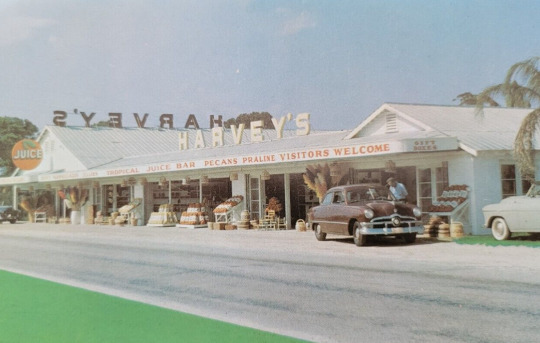
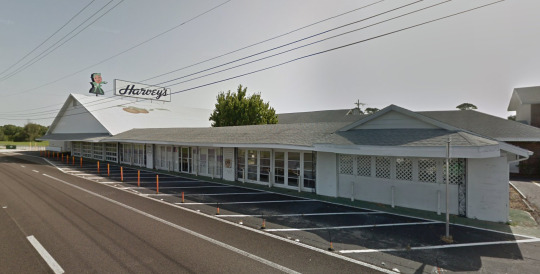

Harvey's Groves of Rockledge, Florida was demolished in 2022. This roadside landmark dated back to 1926 and was known for selling fresh oranges.
73 notes
·
View notes
Text
friendly reminder that i'm selling these cute holographic heart baby harp seal stickers!! these can be found here: https://sealationcreations.etsy.com
once i'm up on my feet, more of my designs will be put up in my shop 🥰💕
#sorry for promoting these so much i'm just in between jobs right now and Really Struggling#thank you in advance if you decide to purchase one!!#seals#pinnipeds#marine mammals#baby harp seals#etsy#seal stickers#seal merchandise
92 notes
·
View notes
Photo

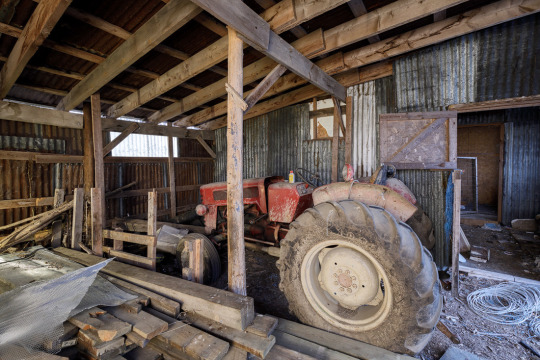

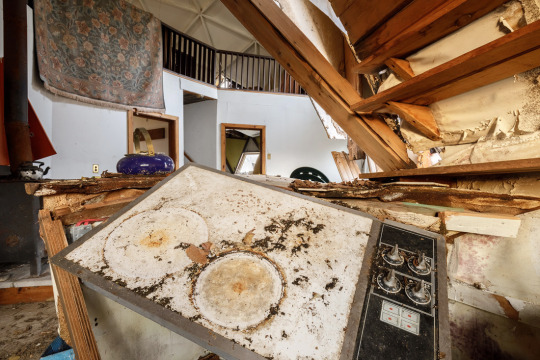

Dome Sweet Dome
Don't forget there is also a video that shows you the entirety of this very unique location!!
https://youtu.be/kuhg83VrQb4
And finally in today's post we will be taking a look at the second floor, the outbuildings as well as a few close-up photos of this unique location!
In this week's post we will be exploring a geodesic dome house that has been sitting abandoned for about 10 years.
The first geodesic dome was designed after World War I by Walter Bauersfield who was the chief engineer at Carl Zeiss Jena, to build a planetarium. But in 1946 Richard Buckminster Fuller coined the term "geodesic". Using triangular shapes it is an extremely strong, light and efficient way of enclosing space.
Geodesic domes have mostly been created for specialised uses such as the 21 Distant Early Warning Line domes built in Canada in 1956. While most of those domes are now gone or destroyed the design can still be seen today in more well known places such as Spaceship Earth at Epcot built in 1982, Science World in Vancouver built for Expo '86, The Climatron greenhouse at Missouri Botanical Gardens built in 1960 or even the Montreal Biosphere built for Expo '67.
Dome homes have been less successful than their commercial counterparts mostly because of their complexity and greater construction costs. In 1986, a patent for a dome construction technique involving polystyrene triangles laminated to reinforced concrete on the outside, and wallboard on the inside was awarded to American Ingenuity of Rockledge, Florida. This technique allowed homes to be prefabricated and assembled from a kit purchased by a homeowner. It appears as though this particular dome used a similar technique.
Although using geodesic domes for houses never really took off, they seem to have had a bit of a resurgence in popularity when it comes to vacation homes in areas of great natural beauty. These structures are built more like tents and often have large swathes of windows for extraordinary views of the surrounding landscapes.
#abandoned#abandoned places#abandoned buildings#abandoned homes#abandoned houses#abandoned geodesic dome#abandoned geodesic domes#geodesic domes#geodesic dome#dome homes#forgotten#forgotten buildings#forgotten places#urbex#urban exploring#urban exploration#bandos
57 notes
·
View notes
Photo
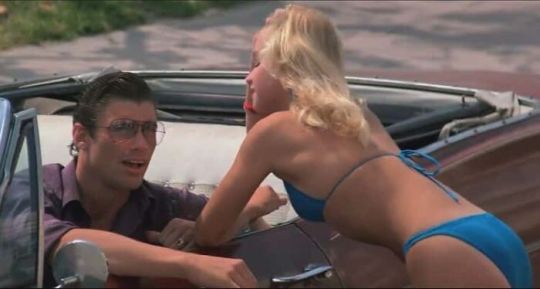
Unsolved Mystery of Tammy Lynn Leppert
By the age of sixteen, Tammy Lynn Leppert of Rockledge, Florida, had competed in more than 300 beauty contests. She won the crown 280 times. Her mother, Linda Curtis, described her as a very loving, kind girl who was always smiling. She "woke up with a smile and went to bed with a smile." She was described as an “uncommonly beautiful child.” When she was just four years old, she was entered in her first beauty contest. Her parents divorced when she was seven. Her fledgling career fell to the tender loving care of Linda, who was a theatrical and modeling agent. Linda was constantly running around, taking Tammy to different pageants, modeling gigs, and other events. She enjoyed doing it and enjoyed watching Tammy excel. She said that Tammy always tried her best and usually succeeded.
Wing Flannagan, one of Linda’s clients, was just eleven when he began living at her house. He and Tammy were like brother and sister. When she would leave the house, she would kiss him on the cheek, leaving a lipstick mark. At first, he was embarrassed by it, but eventually he wore it “proudly” because it was like a “status symbol.”
In July 1982, Tammy was cast in the teen exploitation film, “Spring Break”, which would go on to earn nearly $25 million at the box office. After the movie was filmed, she went unchaperoned to an out-of-town weekend party. She came back a different person. Wing would often ask her what was on her mind and if anything was bothering her. She would usually evade the question. She would either change the subject or say “nothing” was bothering her and try to laugh it off.
Soon, Tammy’s behavior began to take on paranoid overtones. One day, when Wing went to answer the phone, she told him to tell the caller that she was not there. The caller did, indeed, ask for her, and he told him that she was out. Linda witnessed this exchange and asked Tammy what was wrong. Tammy said that she “saw something awful, something really bad, that [she] was not supposed to see.” However, she refused to talk about it further with Linda. She also said to Linda, “Mom, what would you say if I told you someone was trying to kill me?” However, she refused to expand on her comments.
Tammy also said that “they” would come after her if she talked about what she had seen. Linda tried to figure out who “they” were, but Tammy would never say. She began a steady retreat into isolation. Linda and Wing had no way of ascertaining which of her fears were real, and which were paranoid delusions. On one occasion, Tammy called him over to the window. She said, “Look across the street, tell me what you see.” He said, “Well, the neighbors got a new van.” And she said, “Exactly.” He did not understand what she was getting at. She then said that the van had mirrored windows, and that “they can see us, but we can’t see them.” She was convinced that they were spying on her.
After two weeks of virtual seclusion, Tammy was offered a small part in the big budget Al Pacino film, “Scarface”, which began shooting in Miami in March 1983. She stayed with a family friend, Walter Leibowitz. All went well until the fourth day of filming, when she had a breakdown on the set. There was a scene where someone was supposed to be shot, and they had artificial blood spurt out. When she was watching the scene, she started crying hysterically. It got so bad that they had to take her back to her trailer.
The casting director called Walter to inform him about the breakdown. He immediately went to Tammy’s trailer to check on her. According to him, she was in a tremendous state of fear and anxiety. She was hysterically crying, saying something about money laundering. She also said that “they” were going to kill her and she did not know where to hide. He had no idea what had caused this great fear in her. When he spoke to Linda, he told her that she should take Tammy to a doctor. He also told her that she should take Tammy to the police. He hoped that they could determine if her problem was psychological, or if there was actually someone trying to kill her.
Tammy quit the film and went back home. At Linda’s insistence, Tammy did talk to the local sheriff, but she apparently never mentioned that she felt her life was in danger. Even with her family, her paranoia ran rampant. She became convinced that someone was trying to poison her. She refused to drink from open containers. On one occasion, she made Wing taste a piece of her food to see if it was poisoned. She also would only eat from other people's plates. Wing recalled that there were good days and bad days. There were days when Tammy was almost “normal”, and there were other days when she was real “edgy.” Linda said that Tammy’s personality began to change dramatically, as if she was a different person than before. She also began to take on a different look. She had a “wild” and scared look in her eyes. She was convinced that someone was trying to kill her.
On July 1, 1983, Tammy finally snapped. While Wing was reading on the couch, she accused him of looking at her. He denied it. She went outside, but apparently felt overwhelmed and almost immediately turned around to go back in. When she tried to open the front door, she discovered that it had gotten locked (the wind had pushed it closed). She banged on it, demanding to be let in. She then grabbed a baseball bat and smashed the front window. Wing opened the door and told her to stop. She went after him and began to hit him with her hands, yelling and asking why he locked her out. According to him, she had a “crazy” look in her eyes. He thinks that she did not recognize him.
Linda tried to break Tammy out of her psychological state, saying “Tammy, its mother. I love you,” over and over until she snapped out of it. Linda was able to handle that incident, but she was unsure if she would be able to handle the next one. She checked Tammy into the Brevard County Mental Health Center for a complete physical and psychiatric evaluation. Doctors found no evidence of drug or alcohol use, and kept her in the hospital for seventy-two hours of observation.
After Tammy came back home, she asked Linda to promise her that, “if anything happens to [her], get even with 'that' person for [her].” Linda asked her what she thought was going to happen to her. She said that “he” is still going to try and kill her.
On July 5, the day after she was released from the hospital, she went out with her best friend, Rick Adams. Previously, she had told him that someone was trying to kill her. On this day, she told him that she had "seen something [she] shouldn't have seen" but would not elaborate. The two went to church to pray; while there, she cried uncontrollably for several minutes. When he dropped her off at home, they made plans to go to church again the next afternoon. She told him that she loved him and that she might be going away for a while. However, she did not say where she was going.
According to Linda, the next day, July 6, 1983, was extraordinarily normal. She believes that Tammy was trying to show her that she was okay. That morning at around 11am, Tammy left to go out with a friend, Keith Roberts. As she left, Linda suddenly got frightened. She went outside and watched as Tammy left. For some reason, she had a feeling that that would be the last time she would ever see Tammy.
According to Keith, he picked her up at her home and they planned to go to the beach. At some point during the drive, they got involved in a verbal argument. She asked him to let her out at the parking lot of the Glass Bank building in downtown Cocoa Beach, and he complied. He dropped her off along State Road A1A at approximately 3pm on July 6, five miles from her house. She carried no purse or identification. Sometime later that afternoon, she called her aunt's Cocoa Beach costume shop three times, leaving urgent messages for her. She said she was calling from a nearby location. Unfortunately, her aunt was out of town at the time. She also called a friend who was unable to answer. After that, Tammy was never seen or heard from again.
Police questioned Tammy’s close friends. They said that they felt strongly that she was having problems at home. They felt that she left voluntarily. One friend said that Tammy and Linda often got into arguments about her career. Once, she allegedly told her friend, "Man, when I hit 18, I'm out of here." Linda, however, did not believe that Tammy left voluntarily. She admits that they got into arguments, but none of them were serious. She notes that Tammy was getting ready to go to California for three months (which would have put her away from her family anyway). She was reportedly excited about going there. Linda can find no reason for her to run away. Police, however, claimed that they received two calls following her disappearance from a woman who said that Tammy was alive and going to school to become a nurse. Linda said that that would not make sense, as Tammy was "deathly" afraid of blood.
Wing believes that Tammy saw something that she was not supposed to see. He also believes that she knew something she was not supposed to know about someone she was very frightened of. He wishes that he had asked her about her fears, instead of saying that it was all in her imagination. He wonders if she would still be here if they all had taken her more seriously.
What could a seventeen-year-old girl have seen that would cause her to fear for her life? During her breakdown on the set of Scarface, Tammy had mentioned money laundering. According to an official at the U.S. Customs Service, dozens of money laundering cases in Florida were under federal investigation at that time. Some call it sheer coincidence. Linda believes it is no coincidence at all. She thinks that Tammy is either a victim of foul play or has amnesia. Linda wanted to believe everything she told her and wanted to help her. She wishes she could go back and believe everything Tammy said from the beginning and hide her some place until they found out the truth. Now, she just hopes to find out what happened to her.
Based on Tammy's behavior prior to her disappearance, her family believes that she met with foul play. They believe that she saw something that she was not supposed to see and was killed because of it. They believe that her disappearance may have been related to money laundering. Once, she told Linda that a friend of hers had bragged about a large-scale, drug-money laundering operation in Brevard County. Several prominent citizens, cops, and bankers were reportedly involved in it. This led her to be fearful for her safety. There is currently no evidence to support these claims. Interestingly, money laundering investigations were occurring in the area at the time. However, it is not known if these investigations were related to this case.
Keith, the friend that was last seen with Tammy, was considered a possible suspect. However, there has been no concrete evidence to link him to her disappearance. Linda later stated that she believed he was not thoroughly investigated and interrogated. She said that Tammy had once told her that she was afraid that he wanted to kill her.
Accused serial killer Christopher Wilder is considered a possible suspect. He had abducted and raped at least twelve women and killed at least eight of them during a spree that started in Florida and went through Texas, Oklahoma, Nevada, California, and New York in 1984. It ended when he committed suicide during a struggle with police in New Hampshire. His first known victim was abducted from a mall just a few miles from Cocoa Beach.
Linda claims that Wilder and Tammy met on the set of Spring Break in Fort Lauderdale. She further claims that he traveled to Brevard County (where they lived) in a fruitless effort to convince her to let him photograph Tammy. She also recalled that a man strongly resembling him visited her modeling agency several times in 1983, looking for models. Her family filed a $1 million lawsuit against his estate, claiming that he abducted and probably killed her; it was later dropped after his death.
28 notes
·
View notes
Text

Gun Safe Moving Company Near Me | Packing And Unpacking Services Near Me
Local movers, moving company in Brevard County, moving company in Florida, family owned, family operated, locally owned, apartment, condominiums, condo, real estate, new home, storage, moving, movers, small business, upstairs movers, Melbourne, Viera, Suntree, Palm Shores, Merritt Island, Palm Bay, Titusville, Satellite Beach, Indialantic, Cocoa, Cocoa Beach, Rockledge, Cape Canaveral, West Melbourne, Melbourne Beach, Indian Harbour Beach, Malabar, Port St. John, Brevard County, Florida"
2 notes
·
View notes
Photo
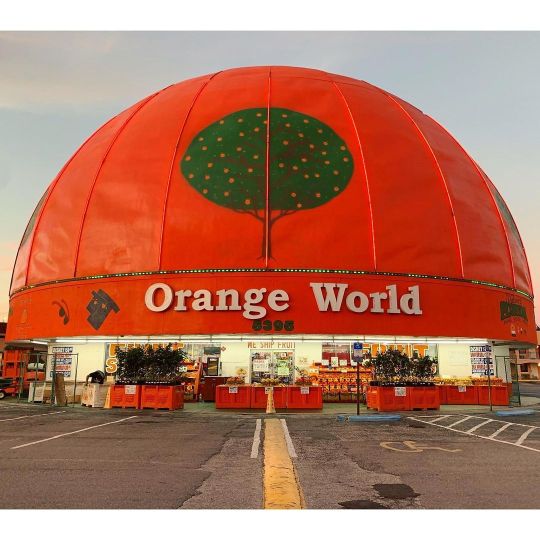
The backroads of Florida are teeming with traces of the citrus industry. They all put a smile on my face, just like the sight of the tall glass of orange juice I enjoyed this morning, on this, National Orange Juice Day! So I’ll begin my highlight reel of my December 2020 trip with the biggest orange of all, Eli’s Orange World in Kissimmee, Florida. Founder Eli Sfassie paid a maker of outhouses $6,000 in 1988 to create this 92-foot-wide, 60-foot-tall, and 35,000-pound tourist attraction, and he’s made such a return on that investment selling oranges and orange-themed souvenirs that it will make you orange with envy to contemplate it! Our third and fourth photos are of the charming Orange Shop in Citra, Florida, which has been a cherished stop for citrus-loving tourists since 1936. No. 5 is a beautiful handpainted sign for fresh orange juice at an abandoned souvenir stand near Lawtey, Florida. There is something so refreshing about this litte vista. Next, we visit Hollieanna Groves in Maitland, Florida, where the friendly workers gave me a tour of the operation, a nice early Christmas gift for me that Dec. 23. The day before, I visited the ghosts in the groves that is Harvey’s, a now defunct citrus business that traces its roots to the Indian River fruit stands of the 1920s. The dashing “Orange Man” mascot and the buildings remained here in Rockledge. Next, we visit the Orange Tree Inn in Deland, Florida. If I didn’t know any better, I’d bet the adorable Orange Bird mascot lived there! We return to Kissimmee for a look at the Orange Bowl Lanes, a classic from 1960 with some seriously swoonworthy signage. And we’ll finish our tour on the trail of the Orange Blossom Motel, not far from the Citrus Shop and down the road from a peanut shack, all along old Route 301, once one of the big tourist roads before the rise of the interstates. A little bit of that lost world survives on these backroads, if you know where to look. 🍊 #retrologist (at Florida) https://www.instagram.com/p/CdJ-0eXLuNG/?igshid=NGJjMDIxMWI=
8 notes
·
View notes
Text
Went to Rockledge Gardens today with a friend. She's a vendor there, and sells some of her beautiful creations there. While she was refreshing her stock, and display, I was wandering the property. My Mom used to love to come here when I was a young'un, around 13 or so. I'm 60 now. If you're a plant person, this is your place.




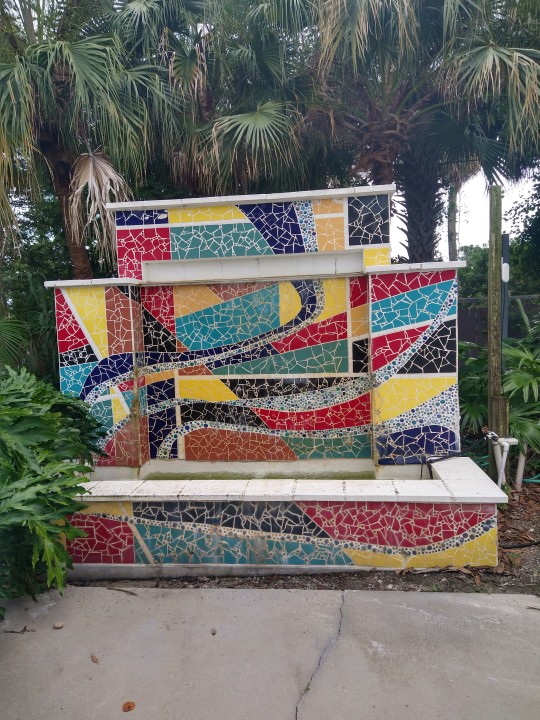
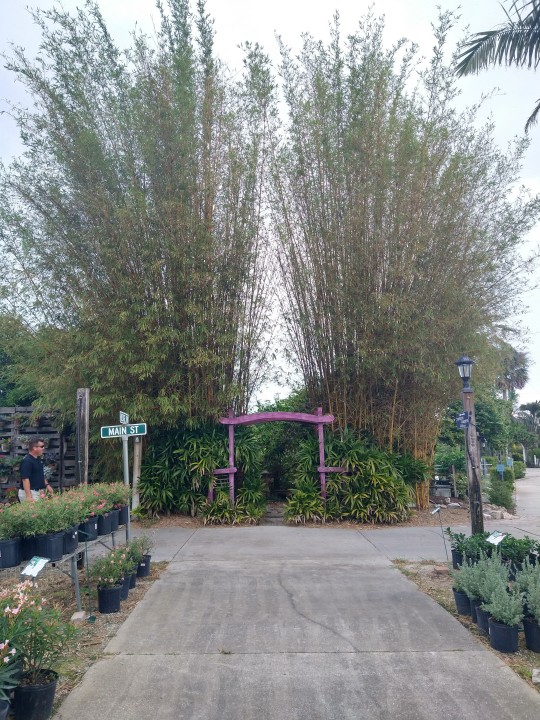
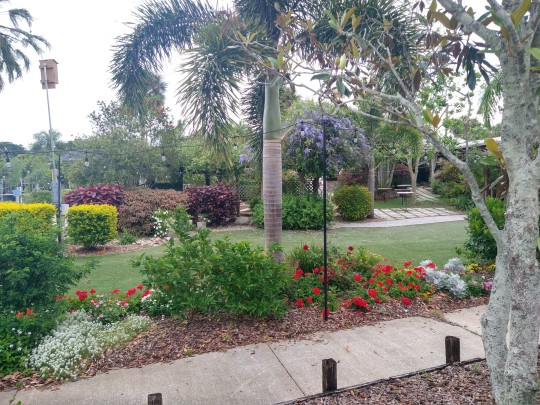



#rockledge gardens#rockledge florida#nursery#nurseries#flowers#plants#titusville#spacecoast#florida#brevardcounty#centralflorida
2 notes
·
View notes
Photo
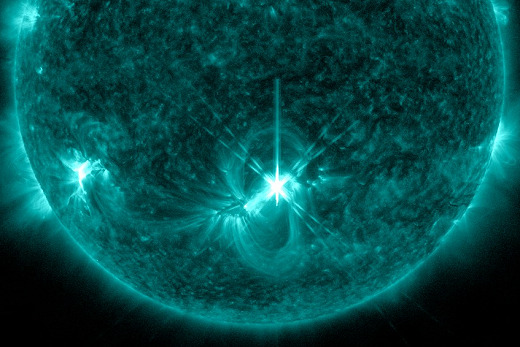

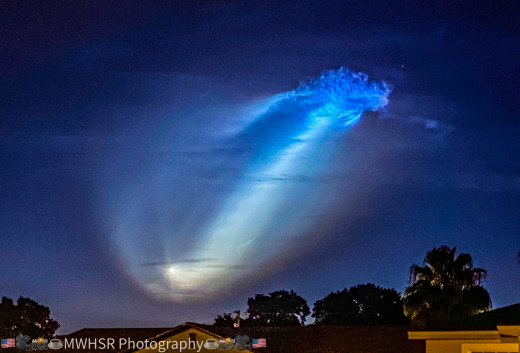
Spaceweather.com Time Machine - May 10, 2022
X-CLASS SOLAR FLARE: "Mixed-up" sunspot AR3006 (1st image, described below) exploded on May 10th (1355 UT), producing an intense X1.5-class solar flare. NASA's Solar Dynamics Observatory recorded the extreme ultraviolet flash.
Radiation from the flare ionized the top of Earth's atmosphere, causing a shortwave radio blackout around the Atlantic Ocean: blackout map. Radio transmissions at frequencies below ~30 MHz were attenuated for more than an hour after the flare.
Since the flare occurred, a mish-mash of CMEs has billowed away from the sun's southern hemisphere. It is unclear if these CMEs are related to the X-flare or instead some other, lesser explosions that happened at almost the same time. There was a filament eruption to the right of the X-flare, and a C4-class solar flare in a different sunspot to the left. NOAA analysts are busy unraveling these events using computer models to determine if one of the CMEs might hit Earth. Stay tuned. Solar flare alerts: SMS Text
A MIXED-UP SUNSPOT: Sunspot AR3006 is having an identity crisis. It is supposed to have a +/- magnetic field. Mostly it does. But deep inside the sunspot's primary core, the polarity is opposite: -/+. Note the circled region in this magnetic map (2nd image) of the sunspot from NASA's Solar Dynamics Observatory.
The mixture of magnetic polarities makes this sunspot interesting and dangerous. When opposite polarities bump together, it can light the fuse of magnetic reconnection--the explosive power source of solar flares. If AR3006 flares today, it will be geoeffective. The sunspot is directly facing Earth.
Update: The sunspot *did* flare today. An X1.5 class explosion on May 10th (1355 UT) caused a radio backout over the Atlantic Ocean and may have hurled a complicated CME toward Earth....
'NOCTILUCENT CLOUDS' OVER FLORIDA: Only a few years ago, the best place on Earth to see noctilucent clouds (NLCs) was near the Arctic Circle. Now it's Florida. Michael Holland Sr. photographed this one on May 6th from Lakeland, FL. (3rd image)
The electric-blue cloud formed in the wake of a SpaceX Falcon 9 rocket, which had just launched from Cape Canaveral carrying 53 Starlink satellites to low-Earth orbit. Ice crystals in the rocket's exhaust caught rays of sunlight in the upper atmosphere, creating the display.
"The noctilucent cloud was simply gorgeous," says Holland.
Years ago, when researchers said "noctilucent cloud," they meant an icy cloud made of meteoroids and water vapor in the polar mesosphere. Only rarely would such natural NLCs spread to low latitudes. Now the term is being used to describe rocket exhaust. Icy "rocket clouds" look a lot like their natural cousins, and they are increasingly common at low latitudes. Already this year SpaceX has launched fourteen Falcon 9 rockets from Cape Canaveral with many more on the schedule.
more images: from Jeff Berkes in Dry Tortugas National Park / Florida Keys; from Dr. Gilbert Plumer of Rockledge, Florida; from Brent of Orlando, Florida; from Martin Wise of Trenton, Florida.
1 note
·
View note
Text

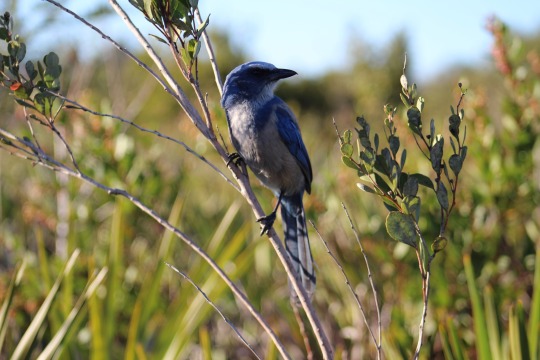


The friendliest little scrub jay pals!
1/16/23 at the Cruickshank Sanctuary in Rockledge, FL.
0 notes
Text
#locksmith Rockledge#locksmith in Rockledge#Automotive Locksmith Services#Commercial locksmith services#Residential locksmith services#customer reviews#emergency locksmith services#Brevard Locksmith 247#Brevard Locksmith#Brevard Lock#Brevad locksmith services#locksmith Brevard#locksmith Brevard County#locksmith Space Coast#locksmith near me Brevard#locksmith Palm Bay#locksmith Melbourne#locksmith Merritt Island#locksmith Cocoa Beach#locksmith Titusville#locksmith Satellite Beach#locksmith Indian Harbour Beach#locksmith in Brevard
0 notes
Photo
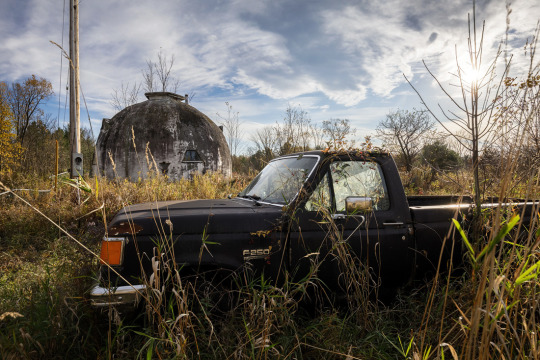
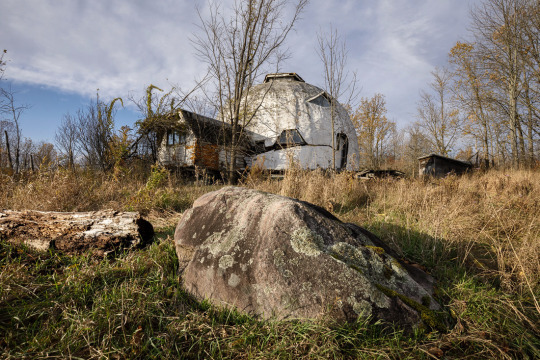
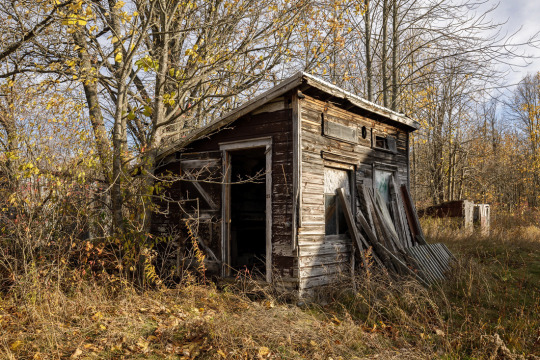
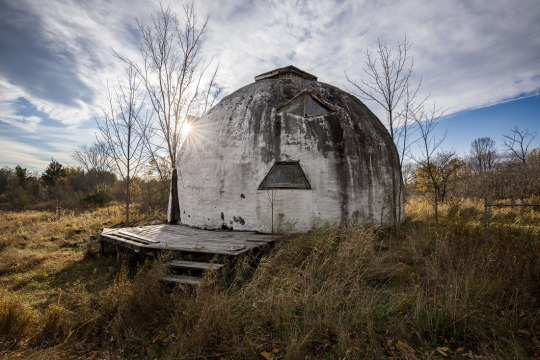

Dome Sweet Dome
You can find the brand new video at this link!
https://youtu.be/kuhg83VrQb4
Let's begin this very unique location by taking a look at some exterior photos of the abandoned geodesic dome, as well as some of the other buildings and things on the property. Also with a sneak peak of the inside of the dome home.
In this week's post we will be exploring a geodesic dome house that has been sitting abandoned for about 10 years.
The first geodesic dome was designed after World War I by Walter Bauersfield who was the chief engineer at Carl Zeiss Jena, to build a planetarium. But in 1946 Richard Buckminster Fuller coined the term "geodesic". Using triangular shapes it is an extremely strong, light and efficient way of enclosing space.
Geodesic domes have mostly been created for specialised uses such as the 21 Distant Early Warning Line domes built in Canada in 1956. While most of those domes are now gone or destroyed the design can still be seen today in more well known places such as Spaceship Earth at Epcot built in 1982, Science World in Vancouver built for Expo '86, The Climatron greenhouse at Missouri Botanical Gardens built in 1960 or even the Montreal Biosphere built for Expo '67.
Dome homes have been less successful than their commercial counterparts mostly because of their complexity and greater construction costs. In 1986, a patent for a dome construction technique involving polystyrene triangles laminated to reinforced concrete on the outside, and wallboard on the inside was awarded to American Ingenuity of Rockledge, Florida. This technique allowed homes to be prefabricated and assembled from a kit purchased by a homeowner. It appears as though this particular dome used a similar technique.
Although using geodesic domes for houses never really took off, they seem to have had a bit of a resurgence in popularity when it comes to vacation homes in areas of great natural beauty. These structures are built more like tents and often have large swathes of windows for extraordinary views of the surrounding landscapes.
#abandoned#abandoned places#abandoned buildings#abandoned homes#abandoned houses#abandoned geodesic dome#geodesic dome#geodesic domes#forgotten#forgotten buildings#forgotten places#homemade#houses#urbex#urban exploration#urban exploring#bandos
31 notes
·
View notes
Text

Viera Dental Design Studio
Welcome to our practice, where our dentist and team provide complete smile care with a full line of dental treatments in Viera and Viera, Florida. We are also pleased to welcome new smiles from West Melbourne, Suntree, Rockledge, Merritt Island and Cocoa. We have a laid-back atmosphere at our office and are open Fridays for your convenience. For more than 20 years, Dr. Michael Lee and our team have been making good smiles better. We always take the time to get to know you and not just your smile. We will always make the time to talk with you about your dental health needs and help you understand all of your treatment options. At our office, the patient always comes first.
0 notes
Text
The Trusted Choice for Water Heater Installation in Rockledge, FL
In Rockledge, FL, one thing homeowners value is the consistent comfort of warm water. Whether it's for that revitalizing morning shower or washing a stack of dishes after dinner, a reliable water heater is essential. That's where we, at EK. Coggin Plumbing, step in to make a difference.

Rockledge residents know how varying the Florida weather can be. Chilly mornings or unexpected cold spells mean your water heater works overtime. Recognizing the importance of this essential home appliance, we've honed our skills and expertise to offer top-notch water heater installation services right here in Rockledge.
Choosing the right water heater isn't just about the brand; it's about understanding the unique needs of each home. At EK. Coggin Plumbing, we don’t believe in a one-size-fits-all approach. Instead, we take the time to assess each home's requirements, ensuring that we recommend and install the best water heater for your specific needs.
But why choose us for your water heater installation in Rockledge? Beyond our commitment to quality, it's our dedication to the community. We've been serving the greater Brevard County area for years, building trust and a reputation for excellence. When we handle an installation, we see beyond the pipes and fittings. We envision the cozy family baths, the hot showers before work, and the warm water needed for cooking. It's about improving the daily lives of our Rockledge neighbors.
In conclusion, if you're in Rockledge, FL, and you're considering a new water heater, let EK. Coggin Plumbing guide you. We promise not only a professional installation but also the peace of mind that comes with knowing you've got the best setup for your home. Remember, when it comes to water heater installations in Rockledge, we're the name you can trust. Learn more at: https://cogginplumbing.com.
1 note
·
View note